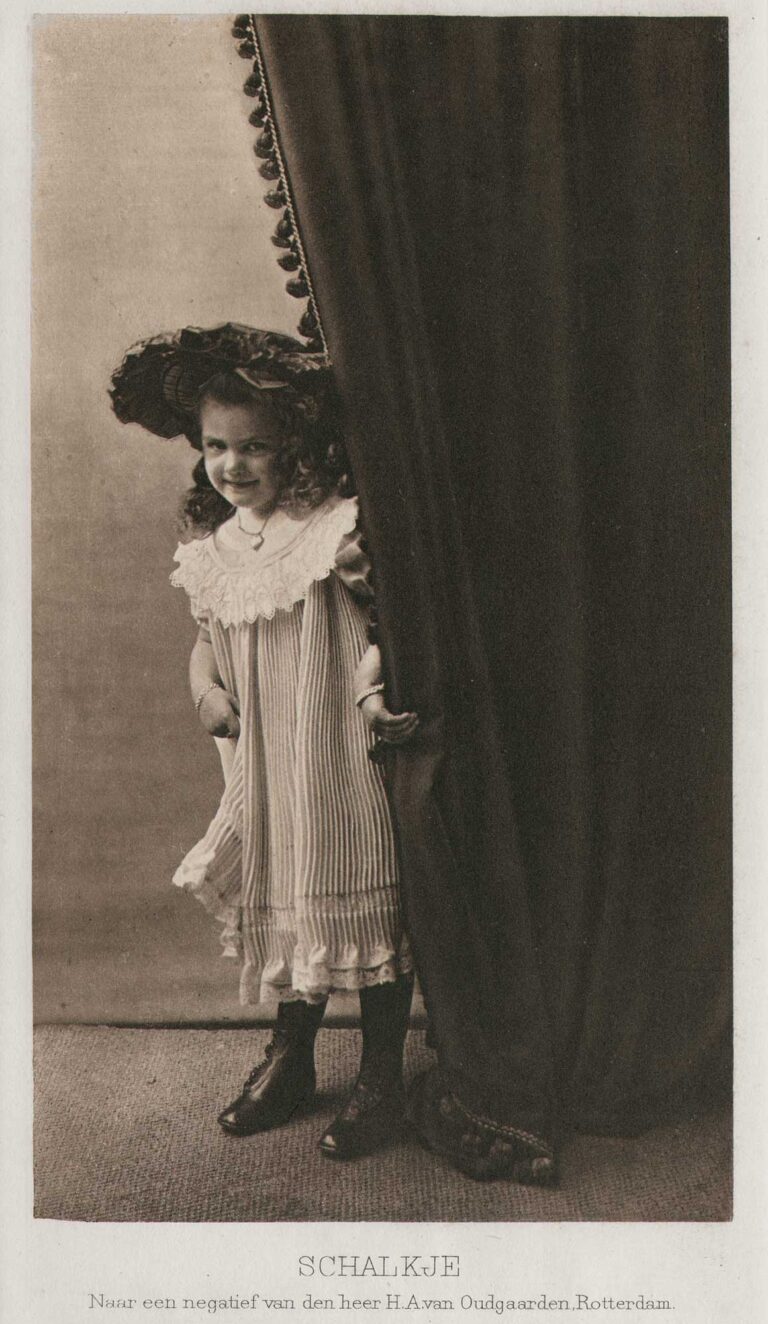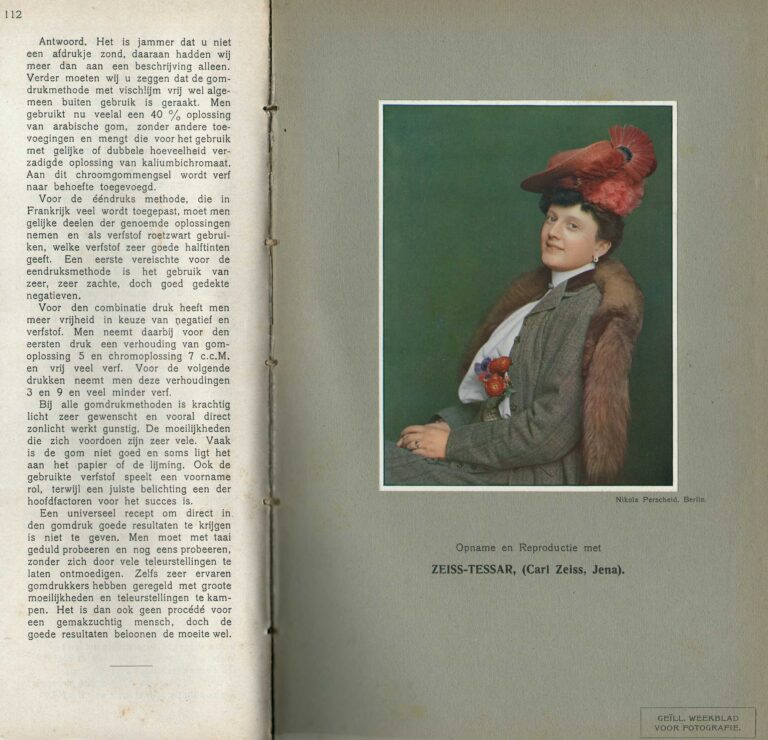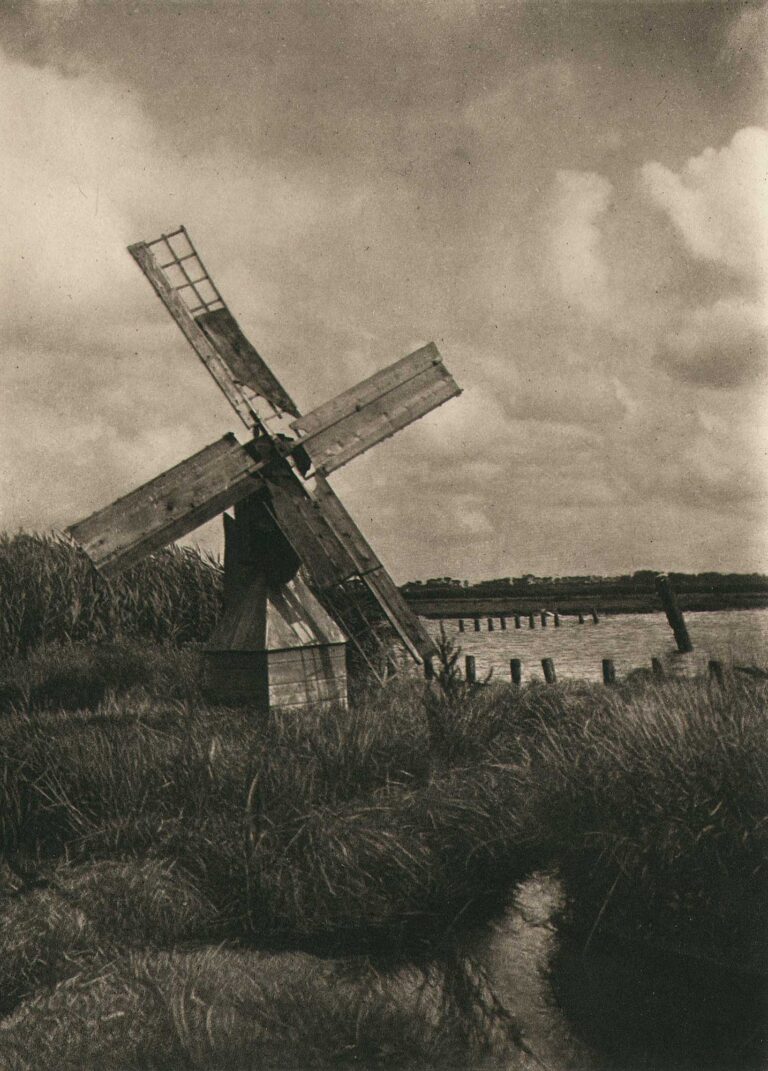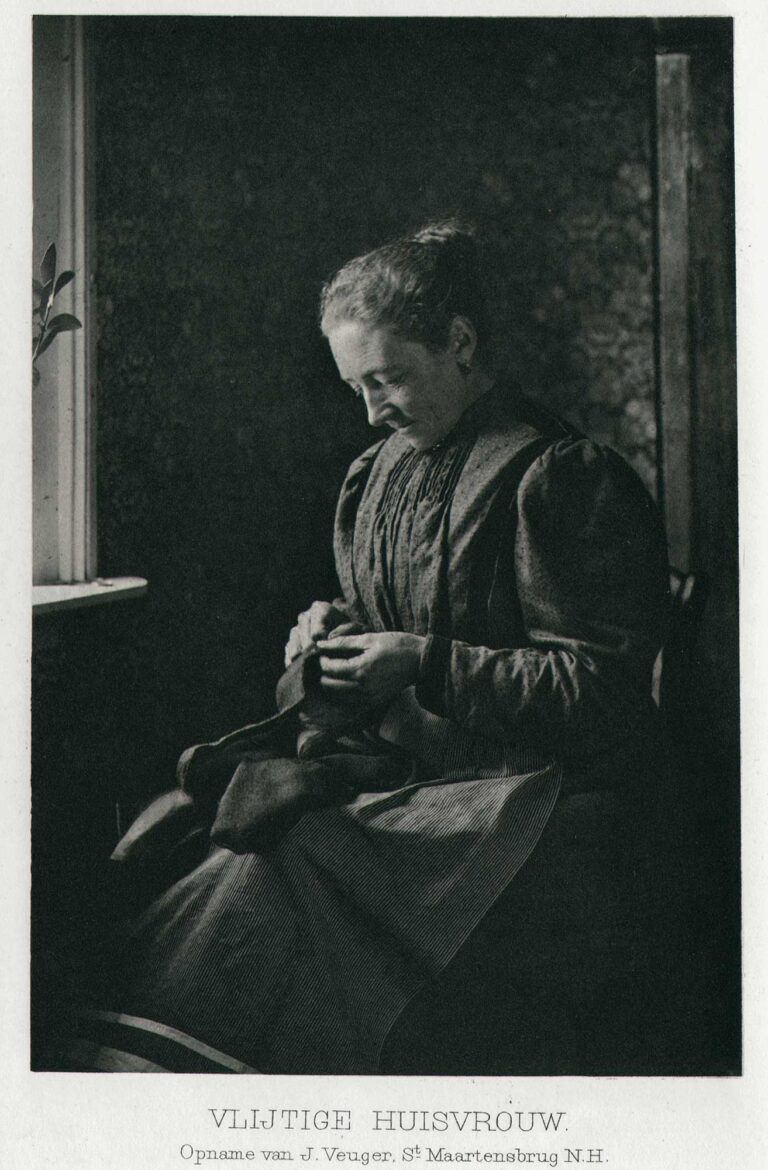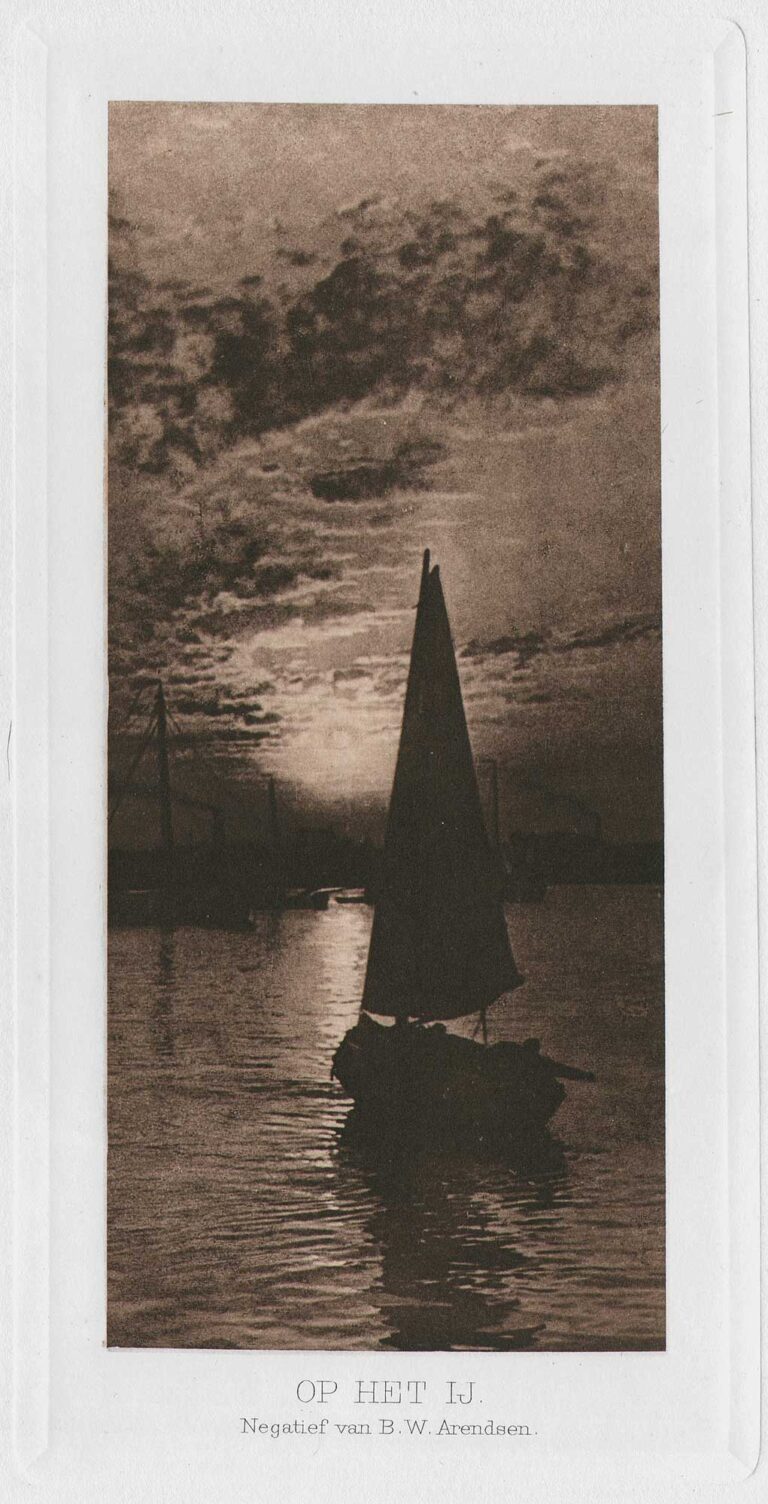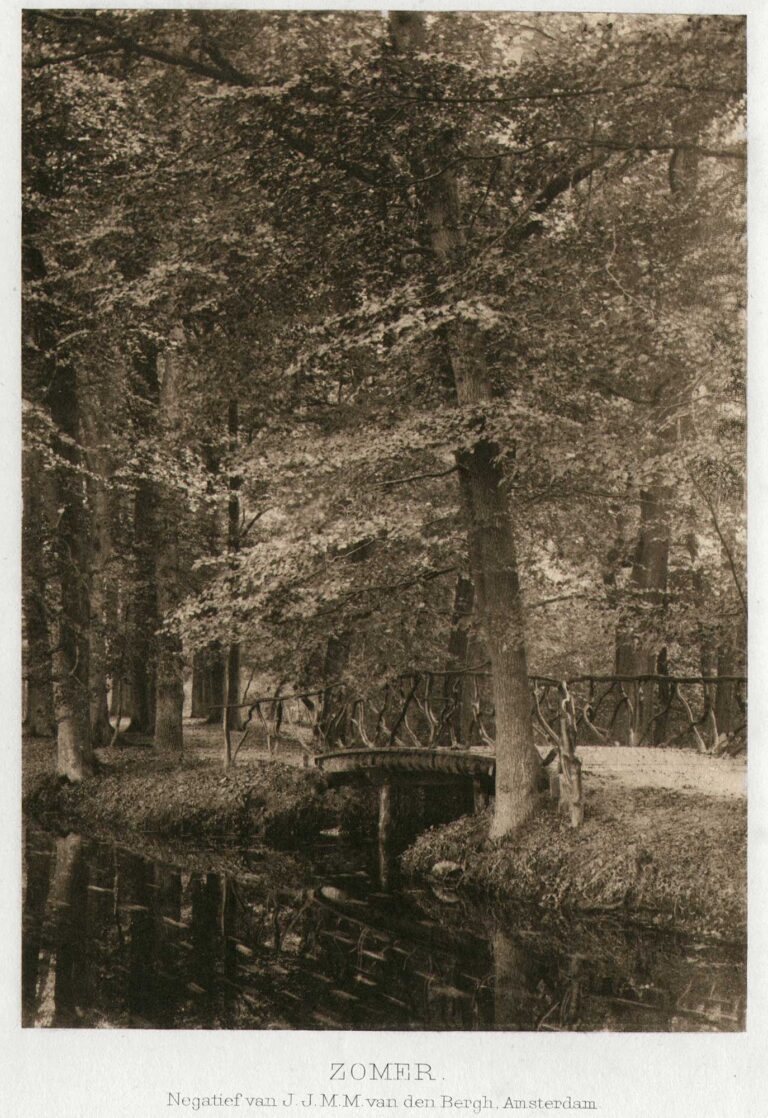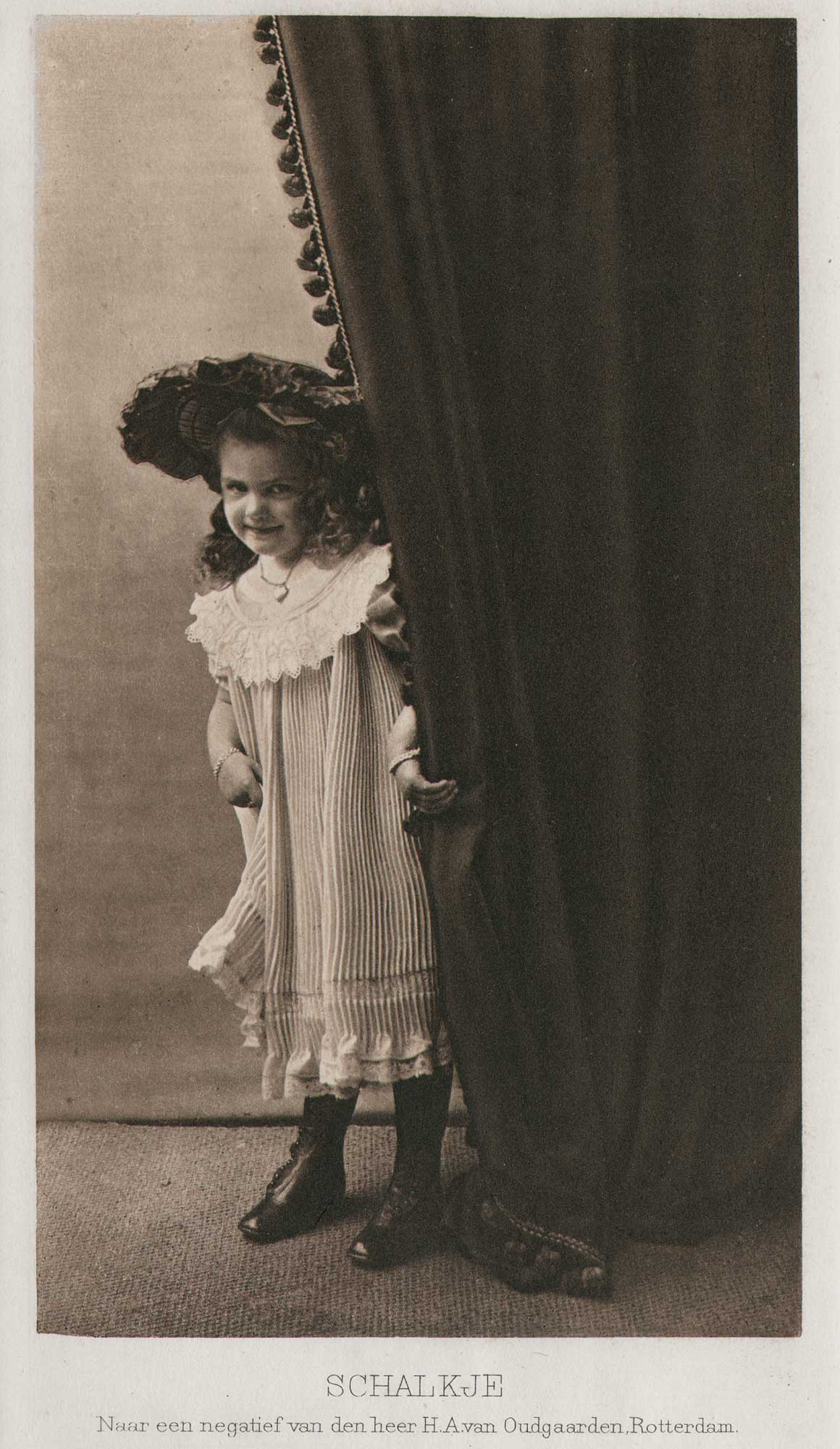
Geïllustreerd Weekblad voor Fotografie 1907
Because 1907 was a transition year for this journal- with publisher and founder Laurens Hansma of Apeldoorn revealing for subscribers in the first issue on January 5 that he could “for private reasons, no longer concern himself with the management of the journal as he considered necessary” the subsequent publishing of hand-pulled photogravures that had occurred 12 times per year (probably from 1900 and later) was now curtailed. 1907 had a total of 5 gravures published, along with a multi-color halftone by Nikola Perscheid of Berlin. Mounted on art paper, (included with this group set) it was actually a nice bit of product placement for the optical works Carl Zeiss of Jena showing off a fancy studio portrait by Perscheid using the Zeiss-Tessar lens.
The masthead for 1907 includes the following, with a lengthy note to subscribers outlining the new changes afterwords:
14th Year Saturday January 5 1907 No. 1 Geïllustreerd Weekblad voor Fotografie Edited by J. J. M.M van Den Bergh and with the cooperation of many well-known photographers and amateur photographers. W.J. THIEME & Cie. ZUTPHEN
To the Readers. (translated)
An age of thirteen years is, for a trade journal, a rare and respectable life span. No less remarkable is the fact that a thirteen-year-old still counts a number of subscribers among his Readers, who have remained faithful to the journal from his birth to the present. The Illustrated Weekly for Photography is today entering its fourteenth year, under completely changed circumstances.
The founder, Mr. LAURENS HANSMA of Apeldoorn, can, for private reasons, no longer concern himself with the management of the journal as he considered necessary. That is why it was transferred to Messrs. W. J. THIEME and Cie., Publishers of Zutphen, who entrusted the management of the journal to Mr. J. J. M. M. VAN DEN BERGH, who has been well-known to the Readers for many years. The Editor-in-Chief has primarily contacted him who has distinguished himself for years by providing sound and expert answers to questions asked by subscribers and by assessing personally produced photographic work submitted by them.
The gentleman – and here we are going to lift the veil that has so far hidden the personality of this Editor of the “Question Box” and “Criticism” from the curious or interested gaze of the Readers – Mr. ADRIAAN BOER then, the well-known expert and practitioner will, as hitherto, only no longer anonymously fulfill this task. Subscribers will therefore not feel lost in strange spheres when reading their magazine, and the improvements that we intend to gradually introduce will have the sole purpose of raising the level and attractiveness of the magazine as much as possible, so that it will acquire many new friends in the future.
We count on real support from our employees and other experts, regardless of whether they practice photography as an amateur or as a professional. Our columns will always be open to solid original contributions.
As up to now, the magazine will provide an anthology of the best that the most important magazines at home and abroad contain. The Editor-in-Chief wishes to draw attention to the fact that he wishes to retain the exclusive choice of what will be included in this column and that translations or adaptations of such pieces will only be published when they have been made in accordance with an order from the Editor-in-Chief. The circular accompanying this issue mentions, among other things, a number of proposed reforms, some of which are already taking effect. We welcome friendly hints and advice from subscribers, they will always be seriously considered by us.
And so our old friend enters the new year, may he grow and flourish. Our heartfelt congratulations to the Readers, with the new year, which may be happy for them, in their domestic circle, in their social work and also in their photographic activities, so that the desire for our favorite profession, which certainly in attractiveness and attainable results, also for the solid Amateur practitioner, wins over most other professions, may become ever greater and the results of work and study ever better.
The Editor-in-Chief. Amsterdam, January 1, 1907.
History: Geïllustreerd Weekblad voor Fotografie 1894-1910
The Dutch photographic journal Geïllustreerd Weekblad voor Fotografie (Illustrated Weekly Magazine for Photography) was published for 17 years, from 1894-1910. The masthead on the title page for yearly volumes owned by this archive indicate the “Weekblad” was the “Official Organ of the Amateur Photographers Association “Rotterdam” from at least 1903-1905, and most likely associated with the group much earlier. From 1893-1900, (1898 missing) the weekly was promoted as the Official Organ of the Nijmegen Amateur Photographers’ Association M.L. (1.)
The journal was initially published in Apeldoorn, a city in the province of Gelderland in the center of the Netherlands by Laurens Hansma from 1894-1906. Hansma, (1860-1920) according to a short biography by the Nederlands Fotomuseum in Rotterdam was “an enthusiastic amateur photographer….the publisher of more than fifteen books on photography, including Kleurenfotografie, Fotografie voor den natuurliefhebber, Gomdruk and Het fotografeeren in de tropicen. Laurens Hansma is seen as an important figure in the spread of photography in the Netherlands.”
From 1907-10, the “Weekblad” was then published in Zutphen, located approximately 30 minutes southeast of Apeldoorn- also in the province of Gelderland, by W.J. Thieme & Co.
At the end of its 17th year of publication in late 1910, the journal was purchased and incorporated into the pages of the Dutch photographic journal “Lux” (geillustreerd tijdschrift voor fotografie-illustrated magazine for photography). Now published by J.R.A. Schouten, Lux (1889-1927) took on the former weekblad’s top editor, J. J. M. M. Van Den Bergh, with him joining the growing publications editorial staff.
1. List of Dutch amateur photographers and their circle before 1900: Dissertation: Mattie Boom: Doctoral degree: Erasmus University Rotterdam: “Kodak in Amsterdam The Rise of Amateur Photography in the Netherlands 1880-1910” (p. 142)
